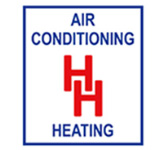As the weather starts to cool off, you are probably wondering about how you’ll prepare your heating and cooling. After all, HVAC costs can contribute a large portion of your monthly electric bill. To learn new ways to lower their HVAC bill, some people look closely at their thermostat. Could there be a setting they could use to increase efficiency?
Most thermostats have a ‘Fan’ or ‘Fan On’ setting. But if the fan is going during a regular cycle, what can the fan setting offer for the HVAC system? This guide should help. We’ll review just what the fan setting is and when you can use it to save money in the summer or winter.
How Do I Access the Fan Setting on My Thermostat?
For most thermostats, the fan setting signifies that the HVAC blower fan remains on. Some furnaces may continue to run at a low level with this setting, but in general heating or cooling isn’t being produced. The ‘Auto’ setting, in contrast, will start the fan over a heating or cooling cycle and switch it off once the cycle is complete.
There are benefits and drawbacks to trying the fan setting on your thermostat, and whether you do or don’t {will|can|should]] depend on your unique comfort requirements.
Advantages to switching to the Fan/On setting:
- You can keep the temperature in every room more balanced by permitting the fan to keep generating airflow.
- Indoor air quality will be highest as steady airflow will keep forcing airborne pollutants through the air filter.
- Fewer start-stop cycles for the blower fan helps expand its life span. Since the air handler is usually part of the furnace, this means you can prevent the need for furnace repair.
Disadvantages to switching to the Fan/On setting:
- A constant fan will likely raise your energy costs somewhat.
- Constant airflow could clog your air filter up more quickly, increasing the frequency you’ll need to replace it.
{Choosing Between|Should My Thermostat Be on|Which Setting for My Thermostat? Fan or Auto in Summer/Winter
During the summer, warm air may persist in unfinished spaces including the attic or an attached garage. If you use the fan setting, your HVAC system might draw this warm air into the rest of your home, pushing the HVAC system to run longer to keep up with the preferred temperature. In severe heat, this may result in needing AC repair more regularly as wear and tear grows.
The opposite can happen during the winter. Cooler spaces like a basement will hold onto cooler air, which can eventually make its way into the rest of your home. Keeping the fan on will sometimes pull more cold air upward, increasing the amount of heating you need to keep warm.
If you’re still trying to determine if you should try the fan/on setting, remember that every home and family’s comfort needs are not the same. Leaving the HVAC system’s fan on could work for you if:
Someone in your household deals with allergies. Allergies and similar respiratory conditions can be tough on the family. Leaving the fan on is more likely to enhance indoor air quality, helping your family breathe easier.
Your home deals with hot and cold spots. Many homes wrestle with stubborn hot and cold spots that quickly evolve to a temperature different from the rest of the house. The fan setting can help limit these changes by steadily refreshing each room’s airflow.




